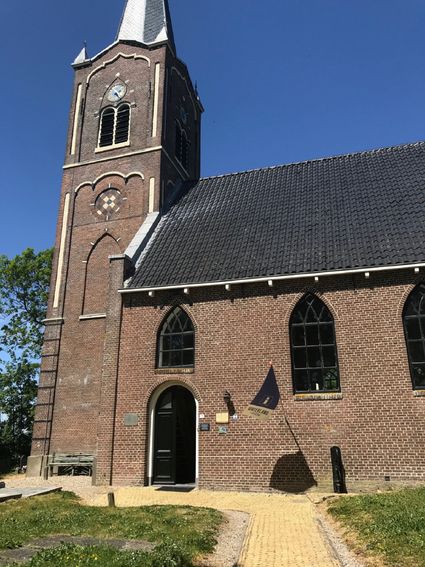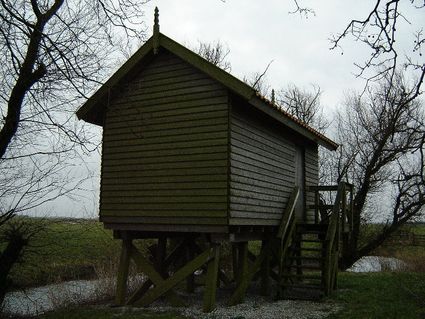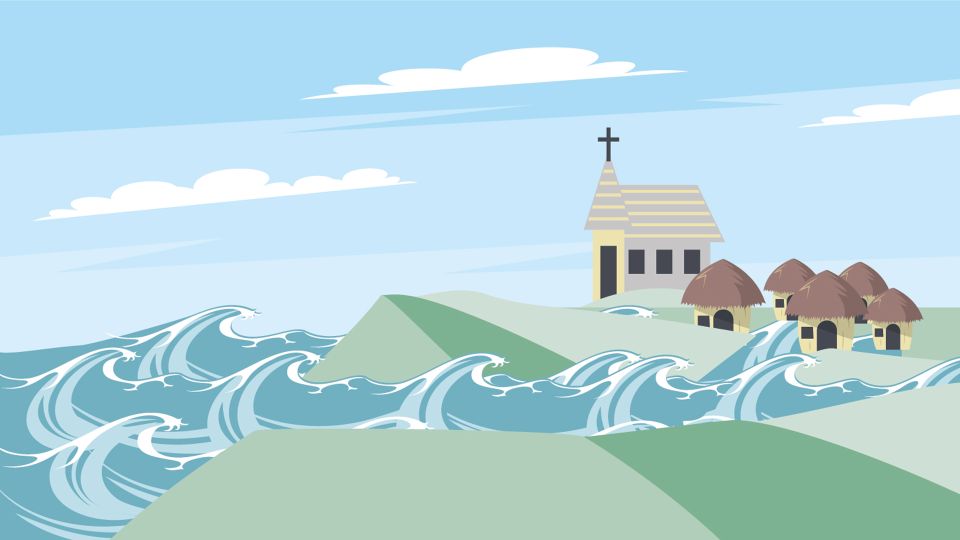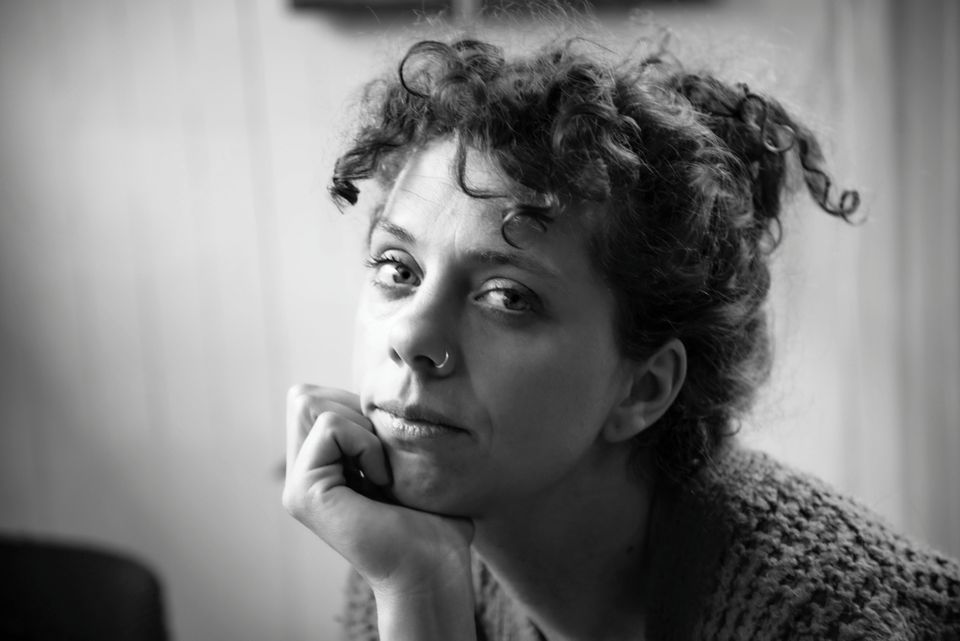Cycling tour Slachtedyk Friesland
Explore the Frisian landscape on two wheels and let yourself be enchanted by a cycling tour along the Slachterdyk!
Slachtedyk is an ancient dike, approximately 42 kilometers long, that was historically essential for protecting the land against the Middelzee. It is one of the most well-known dikes in Friesland. What makes this dike particularly special is that since 2000, a marathon has been held every four years, adding an interesting cultural and historical aspect to the route. The dike runs from Oosterbierum to Raerd.
With this cycling route, you'll cover the initial stretch along the dike, ending in Raerd. Take a break there before continuing the route, completing the loop to return to the starting point (Oosterbierum).
Sights on this route
Starting point
8854 Oosterbierum
Navigate to starting point
Getswerdersyl
The Getswerdersyl was the northernmost lock of the Slachtedyk. In 1982, the lock was demolished, and a large memorial monument now stands in the place of the old lock.
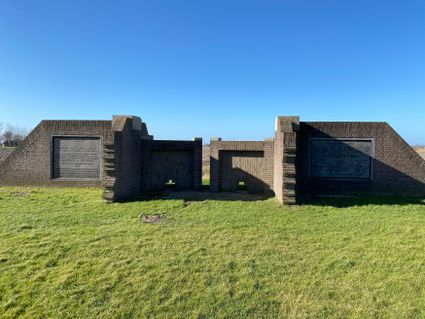
Franeker (Frjentsjer)
The Elfsteden city Franeker is a captivating town with its rich university history. For many years, this city was home to numerous students, including well-known names such as Descartes.
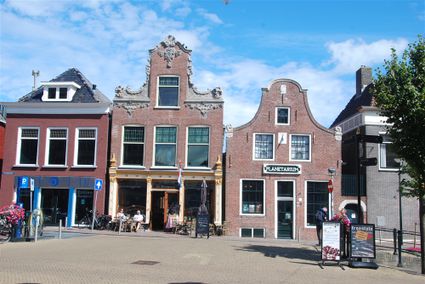
Achlum
Achlum is a picturesque village along the Achlumervaart. Did you know that the alternative Elfstedentocht (Eleven Cities Tour) passes through this canal? The Slachtedijk also runs along the village. Explore the numerous national monuments on foot, by bike, or by boat.

Gertrudis-Church Achlum
The Reformed church is located on a relatively high mound along the Slachtedijk, originally dedicated to Saint Gertrude. It is a national monument.
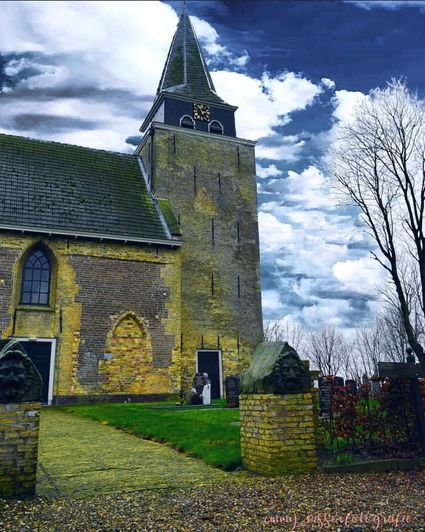
Aylvapoldermill Burgwerd
This polder mill was built in 1846 and reconstructed in the year 2000.

Lytsewierrum (Lutkewierum)
Visit the terp village of Lytsewierrum, located at the end of a dead-end road. The village has a protected village view.

St Martin’s Church Fresco
While restoration work was being carried out at St Martin’s Church in Boazum, a remarkable fresco was discovered. The 12th-century church is one of the oldest Roman churches in Friesland. The fresco is very unusual in that it shows Jesus without a beard.

The Swette
The Swette was dug as a drainage and boundary ditch between the regions of Oostergo and Westergo after the Middelzee had silted up.
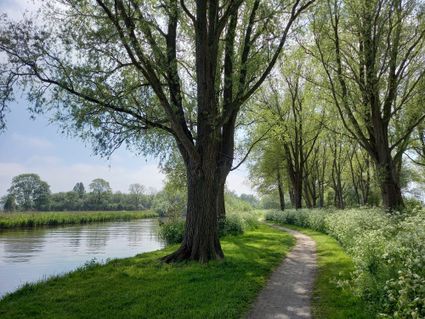
Raerd (Rauwerd)
Discover Raerd, a Frisian terp village that radiates tranquility, space, and a sense of community.

Mummy Crypt in Wiuwert
In 1765, carpenters working in St Nicholas Church in Wiuwert had the fright of their lives when they unexpectedly came across seven perfectly preserved bodies in the crypt. The carpenters fled from the church in panic.

Sint Jorischurch Britswert
Although there are no mummies to be seen in the church of Britswerd, it is interesting to visit this 12th-century house of worship, constructed from yellow Frisian bricks.

Skrins Meadow Bird Reserve
The Skrins meadow bird reserve between the villages of Wommels and Oosterlittens is a popular foraging and roosting spot for many birds. In the spring, the flower-filled grasslands are perfect for nesting.
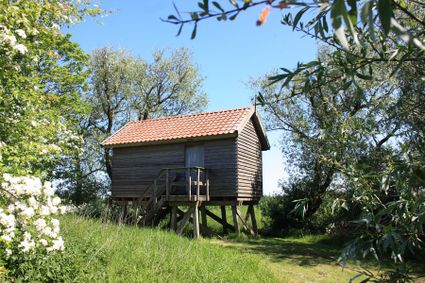
Hinnaard Bell Tower
The village of Hinnaard was built on a mound. The village graveyard, which is also on the mound, is surrounded by elm trees and an elm tree hedge. Some of the headstones mark more recent graves but others date back to the 17th and 18th centuries. In the m
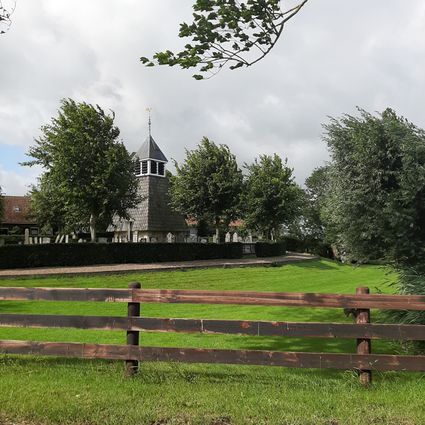
Path along the Bolswardertrekvaart (Bolsward Canal).
A beautiful walking and cycling path along the tow canal of the Bolsward to Leeuwarden canal, near Burgwerd. The path is also referred to as a towpath.

Path along the Bolswardertrekvaart (Bolsward Canal).
Path along the Bolswardertrekvaart (Bolsward Canal).
Trekpad
Burgwerd
Oosterlittens (Easterlittens)
The chimney of the former factory serves as a unique landmark for the terp village. Oosterlittens is a diligent and active village. For several years now, it has also been hosting the Open Frisian Championship in 'Jeu de Pelote.
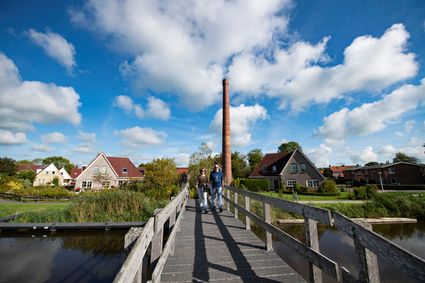
Baard
Baard, a cozy terp village in the green meadows of the Greidhoek. Did you know that the residents are called 'Baarder katten' (Baarder cats)? The proverbial 'dogs' live in Leons. The statue in the center commemorates these earlier times.
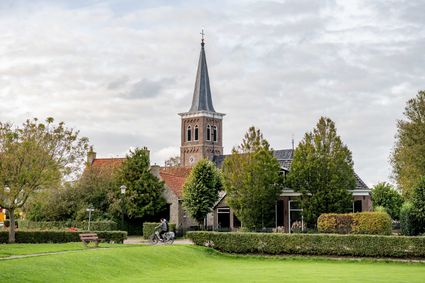
Dronryp (Dronrijp)
The largest village in the municipality of Waadhoeke, rich in history. The birthplace of, among others, Eise Jeltes Eisinga, a famous amateur astronomer, patriot, and builder of the Eise Eisinga Planetarium. In addition to cultural heritage, it is bustling with events.
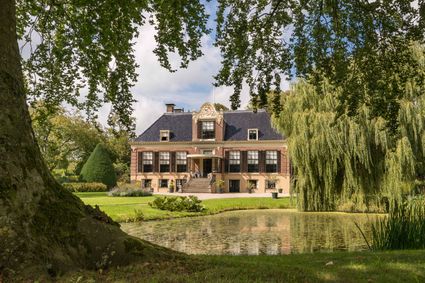
Statue Sir Lawrence Alma Tadema
The statue of the famous painter Sir Lawrence Alma-Tadema stands in front of his birthplace in the center of Dronryp.
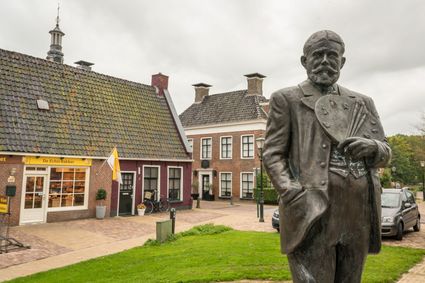
Statue Sir Lawrence Alma Tadema
Statue Sir Lawrence Alma Tadema
Plantsoen Brêgebuorren
Brêgebuorren
9035 AP Dronryp
Former residence of Eise Jeltes Eisinga
When Eise was about 5 years old, the family moved to Brêgebuorren 14 in Dronrijp. Here, he practiced the profession of wool comber before moving to Franeker.
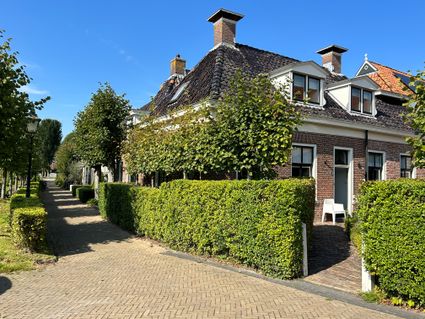
Former residence of Eise Jeltes Eisinga
Former residence of Eise Jeltes Eisinga
Voormalig woonhuis Eise Eisinga
Brêgebuorren 14
9035 AS Dronryp
Berltsum (Berlikum)
A terp village with urban ambitions. Berltsum is also called the twelfth city of Friesland. Located on the northern eleven cities sailing route. In and around Berltsum, there are plenty of opportunities for cycling and walking.
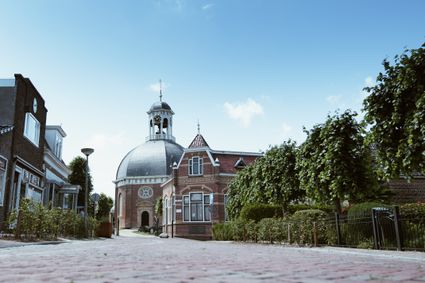
Dome church Berlikum
Koepelkerk in Berltsum, both the church and the organ are national monuments.

Wier
Wier is a small, unique village with a rich history, situated between Harlingen and Dokkum. Until dikes were built in the 16th century, the village was located along the Wadden Sea. Be sure to visit the night garden and the Ioannis Theatertsjerke Wier.
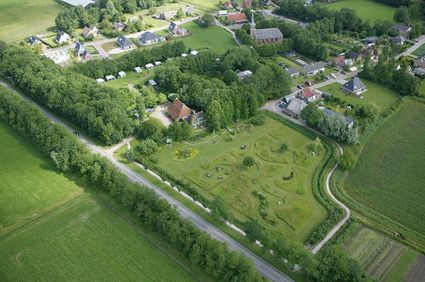
Sint Jacobiparochie (Sint-Jabik)
Sint Jacobiparochie was established in 1505 when Het Bildt was reclaimed by laborers from South Holland, Zeeland, and Friesland. It is particularly well-known for the Groate Kerk (Great Church), serving as the starting point for the pilgrimage route called the Jabikspaad.
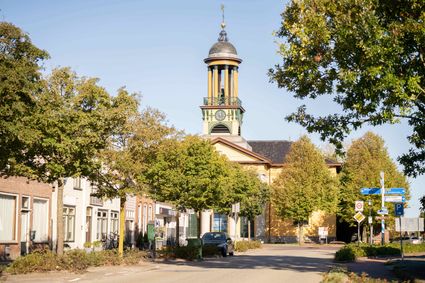
Groate Kerk church in Sint-Jacobiparochie
The imposing Groate Kerk church in the town of Sint Jacobiparochie has served as a cultural centre for the Het Bildt region for several decades, hosting concerts, meetings and other events.

Groate Kerk church in Sint-Jacobiparochie
Groate Kerk church in Sint-Jacobiparochie
Oosteinde 1
9079 PD Sint-Jacobiparochie
Westhoek (De Westhoek)
Unexplored gem of a village with just a few farms and dike houses located along the Oudebildtdijk. Here, as a nature lover and seeker of tranquility, you can enjoy expansive vistas. You can smell the salty air from the UNESCO World Heritage site, the Wadden Sea.

Koehool: de dijk
Wat een dijk! Het is een flinke klim, maar bij helder weer kun je de waddeneilanden zien liggen. Niet alleen de hoogte van de dijk imponeert, maar ook de strakke en rechte vorm. Vroeger was die veel grilliger.
Koehool: de dijk
(beluister hier het audioverhaal)
Wat een dijk! Het is een flinke klim, maar bij helder weer kun je de waddeneilanden zien liggen. Niet alleen de hoogte van de dijk imponeert, maar ook de strakke en rechte vorm. Vroeger was die veel grilliger. Zo kun je aan het wegenpatroon zien dat de dijk hier ooit een bocht maakte.
De dijk was ook veel lager. Tot in de twintigste eeuw konden de Koehoolsters waarschijnlijk vanuit hun huizen de zee zien, over een anderhalve meter hoog dijkje. In de jaren dertig werd de dijk ongeveer vijfenhalve meter hoog en in de jaren zeventig kwam hier nog minstens twee meter bij. De komende jaren wordt de dijk versterkt.
De dijk en de zee bepaalden eeuwenlang het leven in Koehool. Bijna alle inwoners visten in het voorjaar en zomer met fuiken op haring, schar, bot en paling. Met z'n allen sleepten ze de vissersbootjes in het voorjaar over de dijk.
Met de komst van de Afsluitdijk in 1932 was het in één klap afgelopen met de haringvisserij. De zeestromen waren door de afsluiting van de Zuiderzee drastisch veranderd, waardoor ook die dijkverhoging hier nodig was. Een flink deel van de oude (vissers)huisjes en zwartgeteerde schuurtjes sneuvelden in 1970, toen de dijk niet alleen hoger maar ook breder werd. Alleen het beeld De Waadfisker en de recreatiewoningen die op vissershuizen zijn geïnspireerd herinneren nu nog aan de visserij.
De kustbewoners waren ook op een andere manier verbonden met het water. Zwemmen kon je hier namelijk lange tijd ook, bij hoog water dan, net als op andere plaatsen aan de dijk. In de jaren dertig waren hier zelfs badhokjes in het café om je te verkleden.
Ingesproken door:
Scenograaf en theatermaker Sofie Doeland ontwikkelt ook installatiekunst. In 2019 maakte ze een kunstwerk voor Moving Landscapes, een samenwerking tussen Oerol en Sence of Place. Een reizende expositie bestaande uit zes landschapswerken die het perspectief van de toeschouwer manipuleren, raken en sturen.
Sofie begeeft zich graag in een monumentaal of ongewoon landschap, het liefst ergens buiten op een heuvel in weer en wind. Op die manier is ze met Joop Mulder in aanraking gekomen. “Ik heb hem leren kennen als een trouwe, lieve en krachtige man. Nuchter en vastberaden. Erg behulpzaam en vol vertrouwen. Hij stond echt pal achter de kunstenaars waarmee hij werkte. Het raakt me nog steeds dat hij er niet meer is.”
Dit verhaal is onderdeel van de route Gemalen Verhalen van Sense of Place

Bunker Koehoal
The only remaining bunker of the Koehoal Defense Line is a lasting reminder of the air war over Friesland.
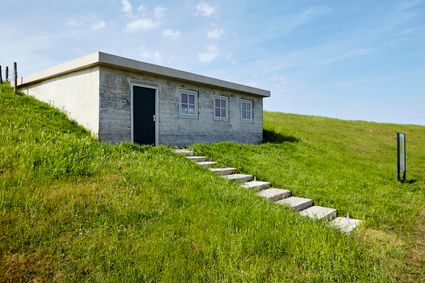
- 33
- 69
- 12
- 15
- 16
- 96
- 32
- 35
- 28
- 06
- 25
- 10
- 46
- 69
- 50
- 89
- 13
- 73
- 12
- 18
- 12
- 73
- 66
- 83
- 48
- 91
- 94
- 74
- 67
- 61
- 44
- 90
- 41
- 81
- 81
- 01
- 36
- 11
- 20
- 22
- 52

